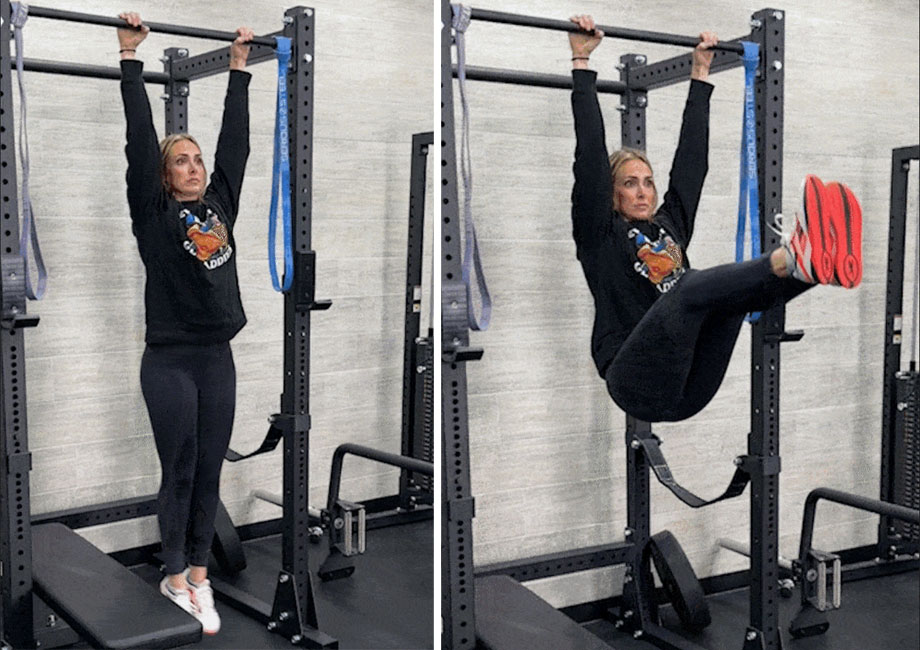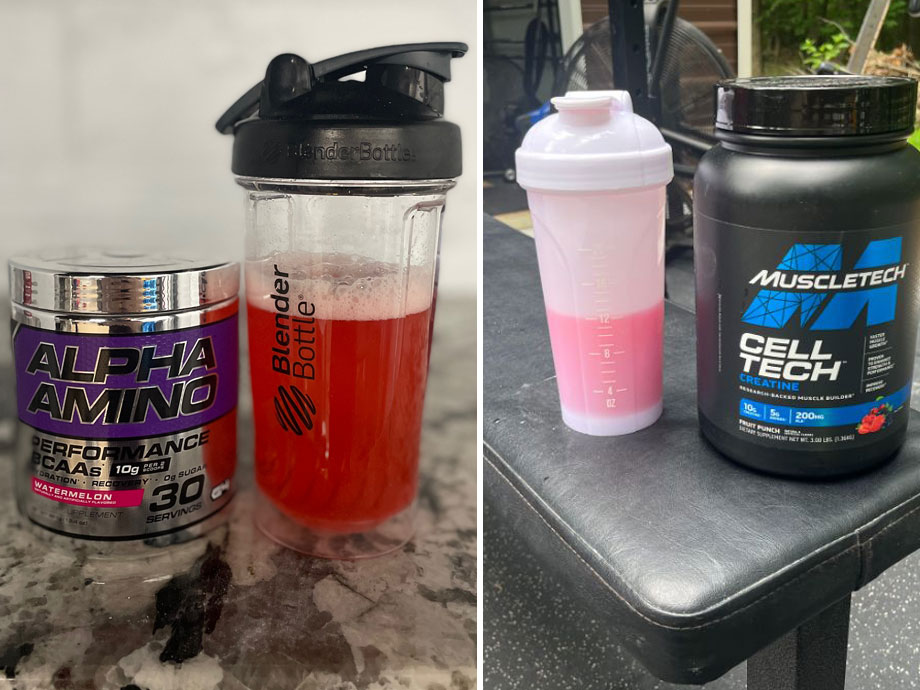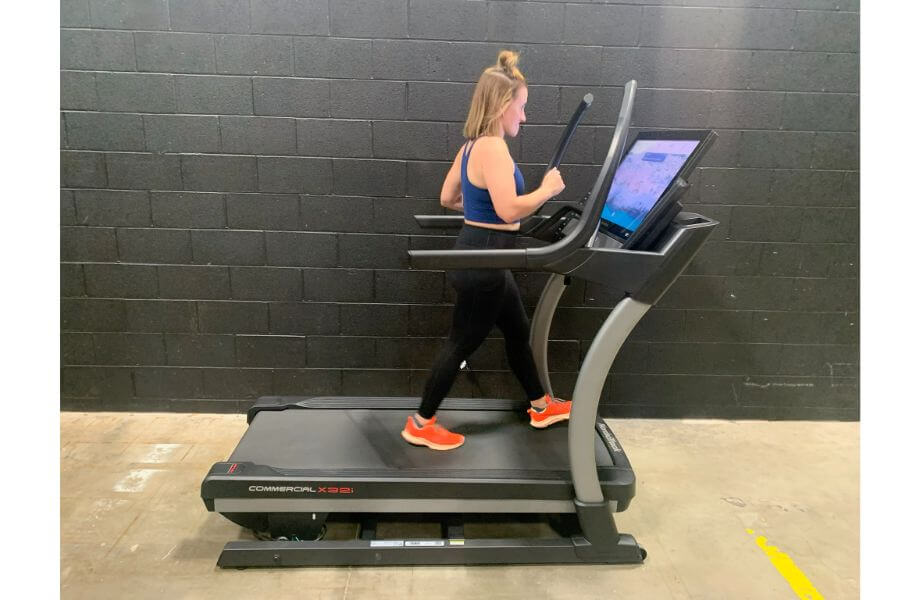Thoracic spine mobility has become a rising issue in the age of sitting. Screen time increases, and time spent sitting has skyrocketed while “t-spine” mobility plummeted. Thoracic spine mobility plays a large role in daily activities and functional fitness, with movements that require bending, rotating, and bracing. A mobile t-spine will also help you crush a back workout with dumbbells and barbells, allowing you to hit PRs, feel healthier, and move better.
RELATED: What is Functional Fitness?
I chatted about all things spinal mobility with Dr. Adam Beck, a Doctor of Physical Therapy (DPT) at 919 Spine in Raleigh, NC, to gain his insights on the thoracic spine and how it functions, what leads to thoracic spine immobility, and the benefits of thoracic mobility exercises.
So, keep reading to dive deeper into unlocking that tight t-spine, what go-to movements to add to your fitness routine, and more expert advice from a tenured fitness professional.
What is the Thoracic Spine?
“In simplest terms, the thoracic spine is 12 vertebrae, stacked.” A wider view reveals more. “You have the shoulder blades, which arguably are impacted most by a lack of t-spine mobility, accompanied by twelve pairs of ribs,” says Dr. Adam Beck.
Then, there are the muscles of the thoracic spine:
- Lats
- Rhomboids
- Erector spinae
- Traps
- Serratus posterior
- Rotator cuff
- Semispinalis
- Multifidus
All of these bones and muscles impact the functionality of the thoracic spine. Dr. Beck states, “…I prefer to call it the thoracic cavity, to include everything from your collar bones down to your last set of ribs/just above the belly button.”
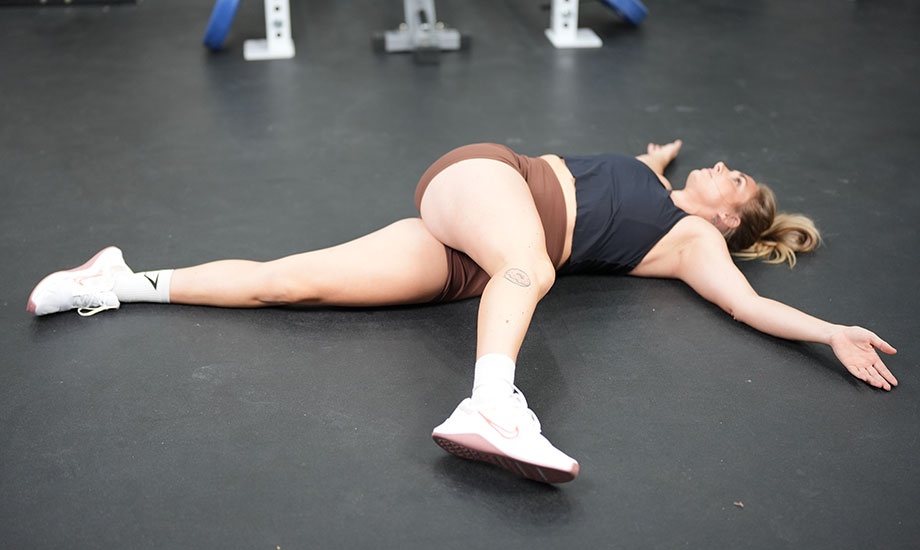
The function of your t-spine depends on the activities you are doing. The thoracic spine flexes and extends (think bending forward and back here) your upper back, aids in rotational movements, and helps with bracing when under load. Want to boost your barbell squat? Build a big upper back to support the weight your legs are trying to move.
RELATED: Best Back Exercises
What Causes Thoracic Spine Immobility?
Dr. Adam Beck, DPT opened with a statement you have probably heard numerous times, “if you don’t use it, you lose it.” He attributes thoracic spine immobility to “years of sitting in school, sitting for work, lack of play, lazy/bad posture, and upper back weakness that all lead to stiffness and immobility. Add in scapula dysfunction from these same issues.”
This all may come across as slightly alarming, especially given that we spend most of our days sitting in front of a screen for work and then moving to another screen to relax—not to mention that smartphone that never leaves your side. The consensus here is a lack of movement in your daily life has caused an increase in that dreaded slouch position.
What are the Benefits of Thoracic Mobility Exercises?
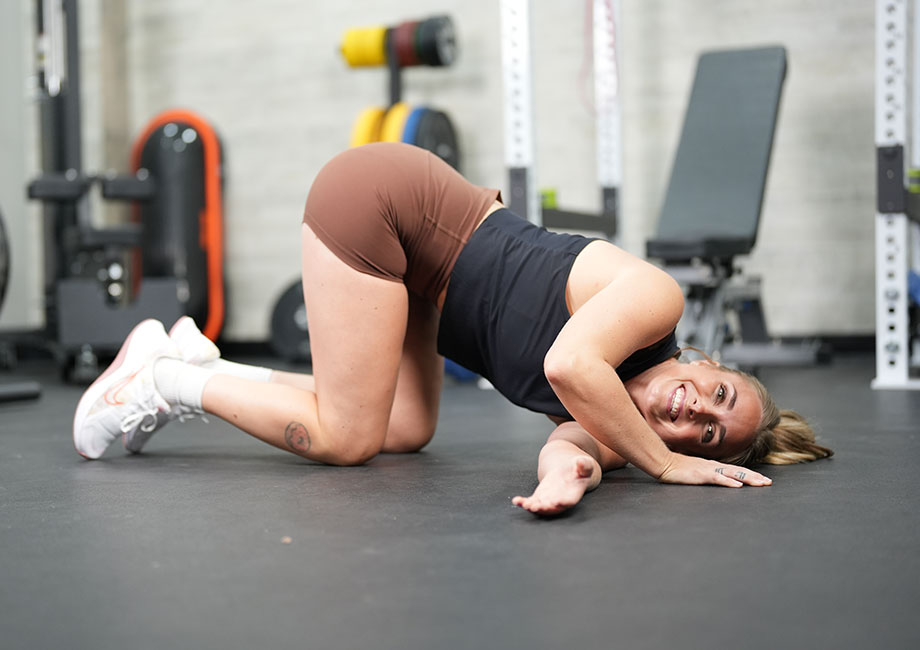
Incorporating thoracic spine mobility exercises in your daily mobility routine, warm-ups or cooldowns at the gym, or as forced rest during workout sets yields incredible benefits. “Less neck pain, shoulder pain, and low back pain, and a stronger, more stable core” are some benefits you will begin to experience, according to Dr. Adam Beck. He states, “Stiff thoracic spines in strength athletes are probably the second most common underlying cause of low back injury, secondary to stiff, unstable hips.”
RELATED: Mobility Exercises
Focusing on thoracic mobility exercises can help you with overhead lifting as it promotes better scapula movement. Hopefully, you can see why mobilizing the thoracic spine and improving your back mobility is crucial in promoting health and reducing injury risk for other areas outside the t-spine.
Thoracic Mobility Exercises
Snag one of the best exercise mats and get comfy as I—a Certified Strength & Conditioning Specialist (CSCS)—focus on a few great exercises to help mobilize your upper body.
Foam Roller Thoracic Extension
Why we like it: Want to find an easy and effective thoracic mobility exercise? Look no further than the foam roller thoracic extension. All you need is a foam roller, a little bit of room, and a few moments to mobilize.
How to do it:
- Lie face up with a foam roller positioned at your mid-back, knees bent, and feet flat on the floor.
- Cross your arms on your chest or place your hands behind your head to cradle your neck.
- Gently roll your upper body along the foam roller targeting your mid-to-lower back muscles with control.
- Repeat for the desired sets and reps or duration.
Expert tip: Sneak in foam rolling your t-spine to loosen up the upper back before performing extensions.
RELATED: Hyperextension Exercise
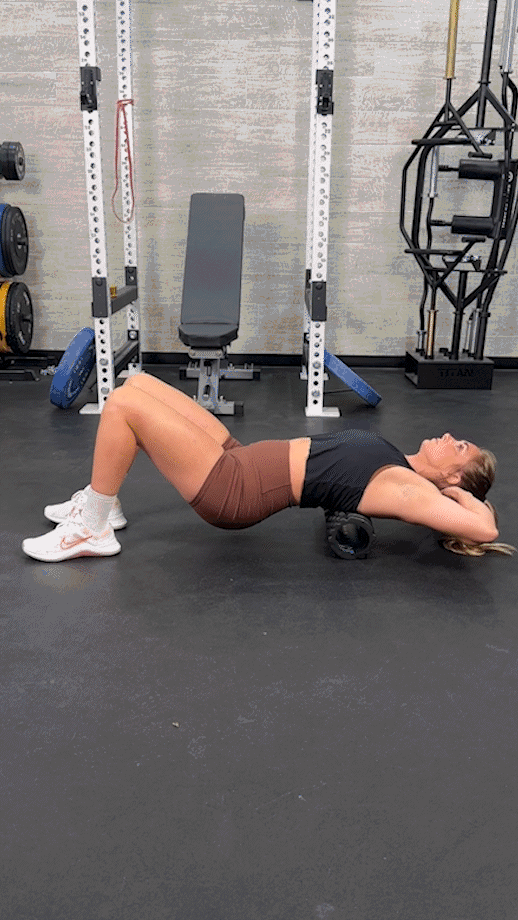
Cat-Cow Pose
Why we like it: The cat-cow pose is an easy movement for improving mobility in your spine. In extension (think of pulling your chest to the floor), you’ll focus on the cow portion of this movement. In flexion (think of pushing your upper back to the ceiling), you’ll focus on the cat portion.
This exercise also helps lower back (lumbar spine) and neck (cervical spine) mobility, creating an easy-to-do movement that can be performed anywhere, at any time. Plus, working out of a quadruped position improves core stability!
How to do it:
- Place your hands under your shoulders and your knees under your hips.
- Inhale deeply, then exhale and push your upper back towards the ceiling while pulling your hips to your abs. This is the cat pose.
- Inhale deeply while lifting your chest and head, and lower your abs and rib cage to the floor. This is the cow pose.
- Repeat for the desired sets and reps or duration.
Expert tip: Slow and controlled is the name of the game here. Let rhythm be your friend as you move through the cat-cow pose.
RELATED: Bodyweight Back Exercises
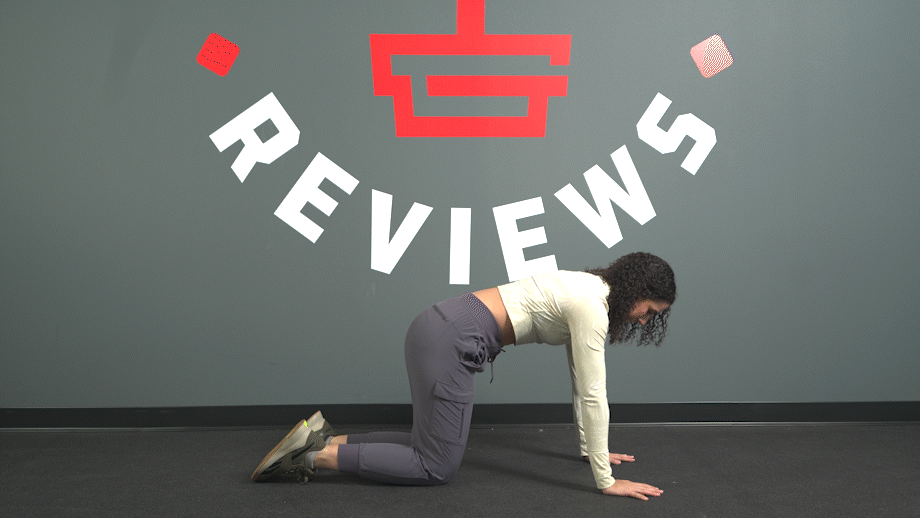
Thread the Needle
Why we like it: Thread the needle is an easy exercise to incorporate thoracic rotation into your routine. This exercise improves thoracic mobility and targets the shoulders, lats, rhomboids, rotator cuff, traps, and serratus anterior. Perform it with control to feel your thoracic spine muscles lengthen.
How to do it:
- Place your hands under your shoulders and your knees under your hips.
- Take your right arm and reach under and across your torso, rotating until the right shoulder reaches the floor. You should feel a nice shoulder, tricep, lat, and upper back stretch.
- Slowly rotate back to the starting position.
- Repeat on the opposite side by taking your left arm and reaching under and across your torso, rotating until the left shoulder reaches the floor.
- Repeat for the desired sets and reps or duration.
Expert tip: Perform multiple sets and reps with shorter holds if you include the thread the needle in your warm-up. Perform longer holds using fewer reps if you use the thread the needle in a cooldown. For a recovery day mobility session, switch it up!
RELATED: Best Warm-Up Exercises
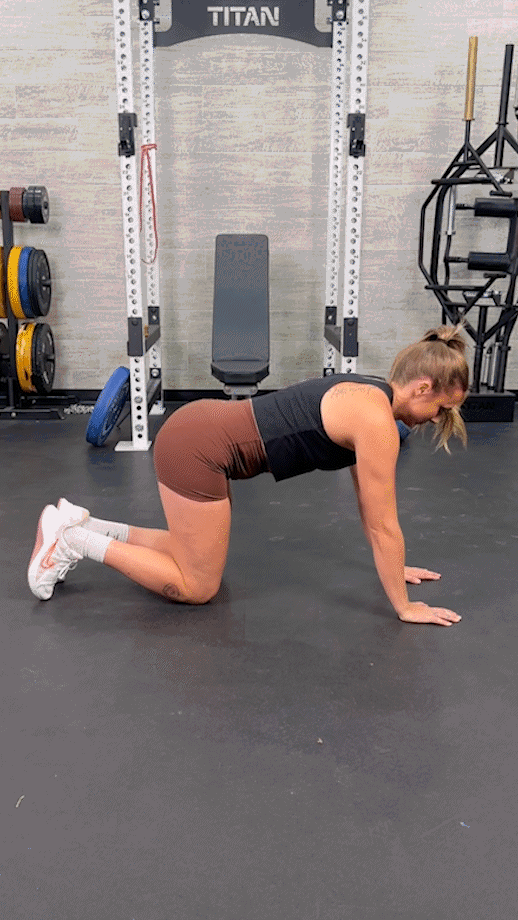
Iron Cross Stretch
Why we like it: The iron cross stretch improves rotational mobility. You perform it by lying on your back, actively rotating your lower thoracic and lumbar spine while engaging your abs. This stretch focuses on your active range of motion (ROM).
How to do it:
- Lying face up on the floor, bring your arms out to your sides, making a “T” shape.
- Lift your left leg and slowly rotate it across your body toward your right side, lightly tapping your foot on the floor. You should feel a nice twist in your mid-back and hips.
- Squeeze your abs and bring your left leg back to the starting position.
- Switch sides and repeat for the desired sets and reps or duration.
Expert tip: Keep your upper back flat on the floor while rotating.
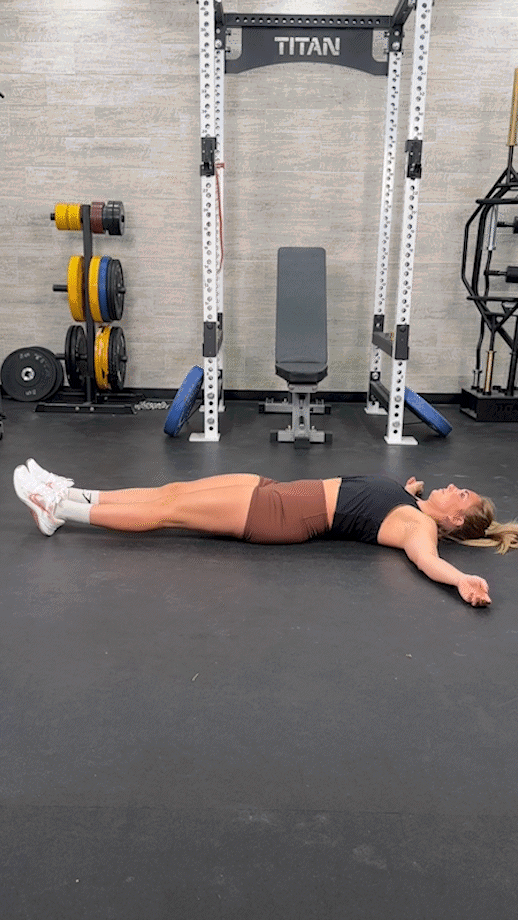
Deep Squat Hold with Thoracic Reach
Why we like it: You probably know the benefits of deep squats. To save time during your warm-up, try adding the deep squat with thoracic reach to improve ankle, hip, thoracic spine, and shoulder mobility. It’s an efficient exercise for multiple gains.
How to do it:
- Position your feet hip-width apart.
- Slowly descend into a balanced squat and hold this position.
- Grab the bottoms of your toes with both hands to anchor the body.
- Reach your right arm up, keeping the thumb pointed back behind you and your arm straight, creating a half “Y.”
- Return your right arm to the starting position.
- Reach your left arm up, keeping the thumb pointed back behind you and your arm straight, creating a half “Y.”
- Return your left arm to the starting position.
- Repeat for the desired sets and reps or hold time.
Expert tip: Keep your eyes glued to the reaching hand to enhance your thoracic rotation.
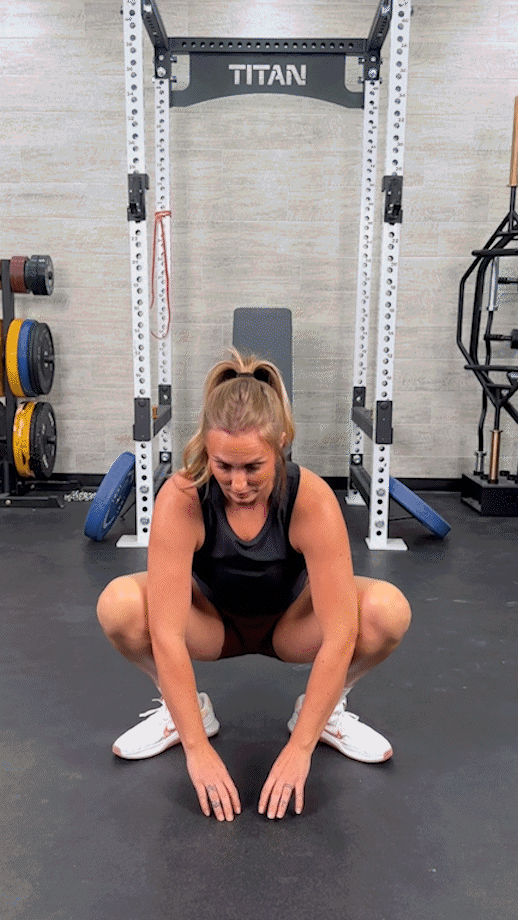
Downward Dog Stretch
Why we like it: The downward dog stretch mobilizes and activates your upper back, forearms, calves, and shoulders, engaging the thoracic spine muscles. Try long holds or sets of 8 to 10 reps with shorter holds to prepare for your push pull workout.
How to do it:
- Start in a pushup position—hands directly under your shoulders and your back flat.
- Push your chest up and then back toward your knees.
- Hold for a breath or two, feeling your arms reaching through the floor.
- Feel your arms and upper back muscles squeeze as you hold the stretch.
- Return to the starting position.
- Repeat for the desired sets and reps or duration.
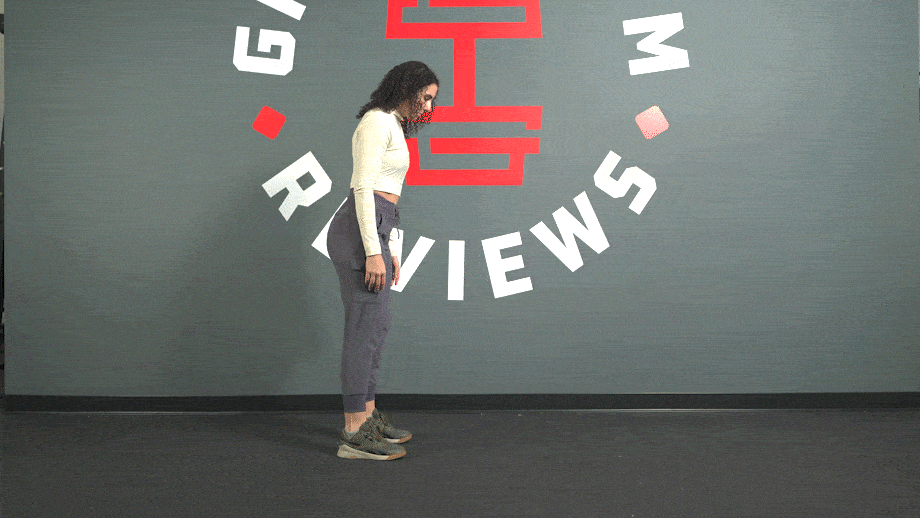
Side Plank
Why we like it: A side plank enhances t-spine strength by engaging your core, shoulders, and upper back to resist spine bending. For an extra challenge, try placing one of the best dumbbells on your obliques for added resistance.
How to do it:
- Begin the movement on your right side by placing your right elbow underneath your right shoulder.
- Lift your hips until your body is in a straight line.
- Squeeze your upper back and brace your abs. Hold for time. Slowly lower yourself back down to the floor.
- Switch to the left side of your body and repeat the same steps.
- Repeat for the desired sets and reps or hold time.
Pro tip: Here’s a cue I use: push the top pant pocket to the ceiling to help hold a strong side plank.
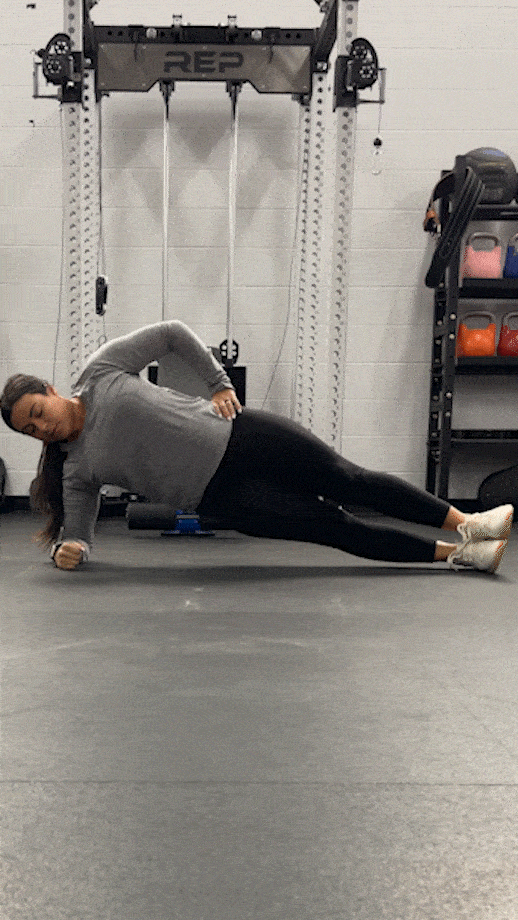
Kettlebell Windmill
Why we like it: The kettlebell windmill helps develop t-spine and shoulder stability while building strong obliques as you brace your core. Use it as a prep for overhead workouts or an ab circuit accessory exercise. And if you need the required equipment, consider picking up one of our recommendations for the best kettlebells.
How to do it:
- Stand with your feet slightly wider than the hip-width apart and press a kettlebell overhead using your right arm.
- Keeping your right arm straight, shift your weight onto your left side and slowly descend by lowering your left arm along the inside of your left leg with your palm facing up. Focus on keeping contact with your hand and leg.
- Slowly stand back up to the starting position.
- Repeat for the desired sets and reps or hold time, then switch to the left side.
Expert tip: Always keep your eyes focused on the kettlebell to improve your balance and control during each repetition.
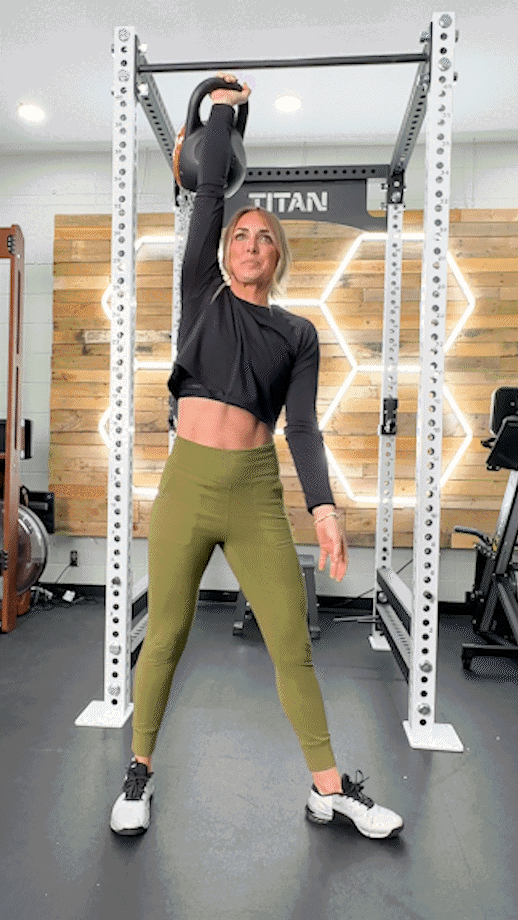
Thoracic Mobility Exercises: Final Thoughts
Incorporating thoracic mobility exercises into your training (and everyday) routine may help counteract the negative impacts of a sedentary lifestyle by correcting posture and promoting a flexible thoracic spine. These exercises also help enhance strength, stability, and movement, both inside and outside the gym, contributing to a healthier you.
Here are a few key takeaways:
- Your t-spine plays a role in multiple movements inside and outside the gym.
- A lack of thoracic mobility is linked to neck, shoulder, and lower back pain.
- Consistent use of thoracic mobility exercises may help improve the upper back’s range of motion, strength, and stability.
- To reiterate, consistency is key. Sneak mobility sessions into your day that make sense.
- Don’t be afraid to explore new movements and deeper ranges of motion in your mobility routine.
- A little mobility can go a long way in improving your health and longevity.
Thoracic Mobility Exercises: FAQs
What causes lack of thoracic mobility?
A sedentary lifestyle is a major reason for reduced thoracic mobility. Counter this by taking brief movement breaks during the day or dedicating 5 to 10 minutes to mobility or stretching in the morning or before bed. There’s positive evidence showing that mobility and physical activity1 can create a lasting impact on your longevity.
What are the effects of poor thoracic mobility?
In a 2018 study2 published in the British Medical Journal, researchers found that poor thoracic mobility may lead to neck, shoulder, and lower back pain. Having a t-spine that lacks movement and strength may cause the muscles of the upper back to weaken. Overall, having poor thoracic mobility can be flat-out uncomfortable.
How do you self mobilize your upper thoracic spine?
Self-mobilizing the thoracic spine is easy and creates lasting positive effects. Below is a quick thoracic spine mobility routine. Once you become consistent with mobility drills, don’t hesitate to plug and play with the other t-spine mobility exercises. Increase the rounds or reps as you master the thoracic movements.
3 Rounds:
-Cat-cow pose: 10-12 reps
-Thread the needle: 10-12 reps
-Downward dog stretch: 30-second hold
RELATED: At Work Stretches
What are thoracic extension exercises?
Thoracic extension exercises are movements that focus on mobilizing the spine and improving range of motion in the muscles of the upper back. In simple terms, thoracic spine extension can be described as bending the upper back forward and backwards. Thoracic extension exercises help improve functionality, may relieve pain in the neck and shoulders, and help your ability to exercise and perform everyday tasks.
References
- Amatriain-Fernández S, Murillo-Rodríguez ES, Gronwald T, Machado S, Budde H. Benefits of physical activity and physical exercise in the time of pandemic. Psychol Trauma. 2020;12(S1):S264-S266. doi:10.1037/tra0000643.
- Heneghan NR, Baker G, Thomas K, et al. What is the effect of prolonged sitting and physical activity on thoracic spine mobility? An observational study of young adults in a UK university setting. BMJ Open. 2018;8:e019371. doi:10.1136/bmjopen-2017-019371.



